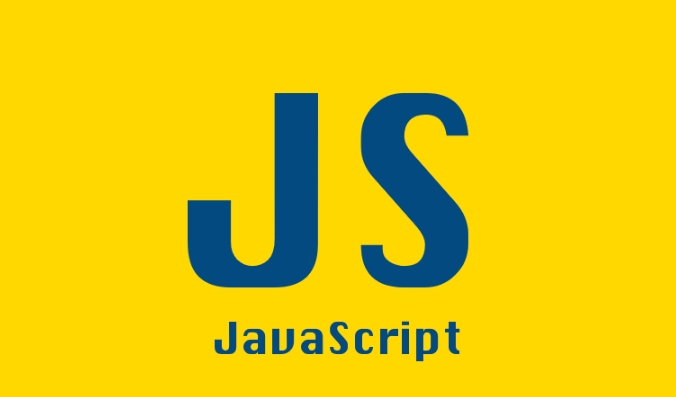The Difference Between `let`, `const`, and `var` Explained in Depth
Jul 27, 2025 am 01:44 AMconst is preferred by default as it prevents reassignment and signals intent clearly; 2. use let when reassignment is needed, such as in loops or changing state; 3. avoid var due to its function-scoping, hoisting issues, and potential for bugs; 4. let and const are block-scoped and hoisted in a Temporal Dead Zone, making them safer and more predictable than var; 5. const does not make objects or arrays immutable—only the binding is protected, so properties can still be modified—all these differences ensure cleaner, more maintainable code when followed properly.

When writing JavaScript, you’ll often need to declare variables — and you’ve got three keywords to choose from: var, let, and const. While they all serve the purpose of storing values, they behave very differently under the hood. Understanding these differences is crucial for writing predictable, bug-free code.

Let’s break down each one and explore their scoping, hoisting behavior, reassignment rules, and real-world implications.
1. Scope: Where Your Variables Live
The most important difference between var, let, and const is scope — that is, where in your code a variable can be accessed.

-
varis function-scoped
If you declare a variable withvarinside a function, it’s only accessible within that function. But if you declare it inside a block (like anifstatement orforloop), it’s still accessible outside the block — as long as it’s in the same function or global scope.if (true) { var x = 10; } console.log(x); // 10 — accessible! letandconstare block-scoped
They only exist within the block (anything inside{}) where they’re defined.
if (true) { let y = 20; const z = 30; } console.log(y); // ReferenceError: y is not defined console.log(z); // ReferenceError: z is not defined
This makes let and const much safer — they prevent accidental access from outside the intended scope.
2. Hoisting: How Variables Are Lifted During Compilation
JavaScript moves all variable declarations to the top of their scope during the compilation phase — this is called hoisting. But how each keyword behaves when hoisted is different.
varis hoisted and initialized withundefined
You can access avarvariable before it’s declared — but it will beundefined.console.log(a); // undefined var a = 5;
This can lead to confusing bugs because the variable exists but holds no meaningful value yet.
letandconstare hoisted but not initialized
They exist in a special zone called the Temporal Dead Zone (TDZ) until their declaration is reached. Accessing them before declaration throws aReferenceError.console.log(b); // ReferenceError: Cannot access 'b' before initialization let b = 5;
This enforces better coding practices by preventing the use of variables before they’re declared.
3. Reassignment and Mutability
This is where let and const differ in intent, even though both are block-scoped.
letallows reassignment
You can change the value of aletvariable as many times as needed.let count = 1; count = 2; // ? OK
constdoes not allow reassignment
Once you assign a value to aconst, you can’t assign a new one.const name = "Alice"; name = "Bob"; // TypeError: Assignment to constant variable
?? Important:
constdoesn’t make the value immutable — it only protects the assignment. If the value is an object or array, its contents can still be modified.const user = { name: "Alice" }; user.name = "Bob"; // ? OK — object property changed user.age = 25; // ? OK — new property added user = {}; // ? TypeError — can't reassign the variable
So const means “this variable will always point to the same value,” not “the value itself is frozen.”
4. When to Use Which? Best Practices
Now that we’ve seen the technical differences, here’s how to use them effectively:
Use
constby default
If you don’t plan to reassign the variable (which is most cases), useconst. It makes your intent clear and prevents accidental reassignment.Use
letwhen you need to reassign
Loop counters, accumulators, or flags that change state are good candidates.for (let i = 0; i < 10; i ) { ... }Avoid
varin modern JavaScript
It’s outdated in most contexts due to its loose scoping and hoisting quirks. The only reason to usevartoday is if you're working in an old environment that doesn’t supportlet/const(very rare now).
Summary of Key Differences
| Feature | var |
let |
const |
|---|---|---|---|
| Scope | Function-scoped | Block-scoped | Block-scoped |
| Hoisting | Hoisted, undefined
|
Hoisted, TDZ | Hoisted, TDZ |
| Reassignment | Allowed | Allowed | Not allowed |
| Redeclaration | Allowed (in same scope) | Not allowed | Not allowed |
| Temporal Dead Zone | No | Yes | Yes |
? Note: Redeclaring a variable with
varin the same scope is allowed (though dangerous), butletandconstwill throw an error if you try to redeclare.
Basically, stick with const unless you need reassignment — then use let. Forget var. It’s that simple.
The above is the detailed content of The Difference Between `let`, `const`, and `var` Explained in Depth. For more information, please follow other related articles on the PHP Chinese website!

Hot AI Tools

Undress AI Tool
Undress images for free

Undresser.AI Undress
AI-powered app for creating realistic nude photos

AI Clothes Remover
Online AI tool for removing clothes from photos.

Clothoff.io
AI clothes remover

Video Face Swap
Swap faces in any video effortlessly with our completely free AI face swap tool!

Hot Article

Hot Tools

Notepad++7.3.1
Easy-to-use and free code editor

SublimeText3 Chinese version
Chinese version, very easy to use

Zend Studio 13.0.1
Powerful PHP integrated development environment

Dreamweaver CS6
Visual web development tools

SublimeText3 Mac version
God-level code editing software (SublimeText3)

Hot Topics
 Solve the 'error: use of undeclared identifier 'variable'' problem in C++ code
Aug 26, 2023 pm 01:46 PM
Solve the 'error: use of undeclared identifier 'variable'' problem in C++ code
Aug 26, 2023 pm 01:46 PM
Solving the "error:useofundeclaredidentifier'variable'" problem in C++ code When programming in C++, we often encounter various errors. One of the common errors is "error:useofundeclaredidentifier'variable'". This error usually means that we are using an undeclared variable in our code. This article will detail
 How to use variables in PHP
May 20, 2023 pm 02:33 PM
How to use variables in PHP
May 20, 2023 pm 02:33 PM
PHP is a very popular web development language that allows developers to create dynamic web applications on the server side. In PHP, a variable is a basic data structure used to store values ??and data. This article will introduce how to use variables in PHP. Basic Syntax of Variables The syntax for declaring variables in PHP is very simple. Variable names begin with a dollar sign ($), followed by the variable name. Variable names can be a combination of letters, numbers, or underscores, but they must begin with a letter or an underscore. For example, the following code declares a name
 How to solve golang error: undeclared name 'x' (cannot refer to unexported name), solution steps
Aug 19, 2023 am 11:01 AM
How to solve golang error: undeclared name 'x' (cannot refer to unexported name), solution steps
Aug 19, 2023 am 11:01 AM
How to solve golang error: undeclaredname'x'(cannotrefertounexportedname), solution steps. During the development process of using Golang, we often encounter various error messages. One of the common errors is "undeclaredname'x'(cannotrefertounexportedname)" which refers to the variable
 Quickly get started with the basic syntax of Golang variable declaration and assignment
Dec 23, 2023 am 08:10 AM
Quickly get started with the basic syntax of Golang variable declaration and assignment
Dec 23, 2023 am 08:10 AM
Quick introduction to the basic syntax overview of Golang variable declaration and assignment: Golang is a statically typed, compiled programming language with excellent performance and development efficiency. In Golang, variable declaration and assignment are one of the basic operations we often use when writing programs. This article will take you quickly into the basic syntax of Golang variable declaration and assignment, and provide specific code examples. Variable declaration: In Golang, we need to use the var keyword to declare a variable and specify the type of the variable. Change
 Difference between `var`, `let`, and `const` declarations in JavaScript
Jul 08, 2025 am 02:21 AM
Difference between `var`, `let`, and `const` declarations in JavaScript
Jul 08, 2025 am 02:21 AM
In JavaScript, the main differences between var, let and const are scope, enhancement behavior, and reassignability. var is the function scope, while let and const are block scope; variables declared by var will be promoted and initialized to undefined, while let and const are promoted but will not be initialized, and access will be errors (temporary dead zone); var and let allow reassignment, while const does not allow reassignment, but the content of the mutable object can be modified. When using it, use const first. Use let when reassigning values ??to avoid using var.
 Differences Between var, let, and const Declarations in JavaScript
Jul 06, 2025 am 12:58 AM
Differences Between var, let, and const Declarations in JavaScript
Jul 06, 2025 am 12:58 AM
In JavaScript, var is the function scope, and let and const are block scopes; var allows variables to be promoted and initialized to undefined, while let and const are promoted but not initialized, and access will be errors; variables declared by const cannot be reassigned, but the contents of objects or arrays are variable. Specifically: 1.var is the function scope, and if declared outside the function, it is the global scope; 2.let and const are block scopes, which are only valid in the declared block; 3.var and let allow reassignment, const does not allow reassignment, but the object or array content they refer to can be modified; 4.var variables will be promoted and initialized to undefined, let
 Understanding var, let, and const in JavaScript
Jul 12, 2025 am 03:11 AM
Understanding var, let, and const in JavaScript
Jul 12, 2025 am 03:11 AM
Var, let, and const in JavaScript have significant differences in scope, variable promotion, and variability. 1.var is the function scope, accessible anywhere within the function; let and const are block-level scopes, accessible only within the code block that declares them. 2. Var has variable promotion and is initialized to undefined. Although let and const are also promoted, they are in a "temporary dead zone". An error will be reported before the declaration. 3. Var can be repeatedly declared and assigned; let cannot be repeatedly declared but can be reassigned; const cannot be repeatedly declared and cannot be reassigned (object or array content can be modified). 4. Const should be used first in actual development, if reassignment is required
 The Difference Between `let`, `const`, and `var` Explained in Depth
Jul 27, 2025 am 01:44 AM
The Difference Between `let`, `const`, and `var` Explained in Depth
Jul 27, 2025 am 01:44 AM
constispreferredbydefaultasitpreventsreassignmentandsignalsintentclearly;2.useletwhenreassignmentisneeded,suchasinloopsorchangingstate;3.avoidvarduetoitsfunction-scoping,hoistingissues,andpotentialforbugs;4.letandconstareblock-scopedandhoistedinaTemp







